When it comes to grilling, two of the most popular and reliable brands are Traeger and Pit Boss. Both companies produce high-quality pellet grills that provide a great outdoor cooking experience. But which one is best for you? This comparison will look at Traeger vs Pit Boss pellet grills, examining different features and prices to help you decide which is right for your needs. From design to capacity, we’ll cover everything you need to know so you can make an informed decision regarding Traeger vs Pit Boss.
About Traeger Pellet Grill
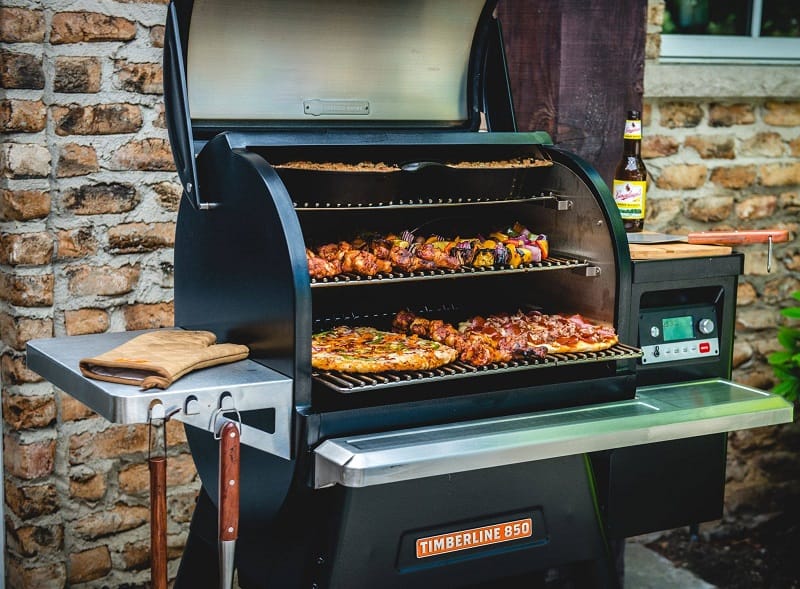
A pellet grill is a type of outdoor cooker that uses wood pellets as fuel. For a good reason, the Traeger brand is one of the most well-known and respected in this space.
First of all, the flavor that comes from cooking with wood pellets is unbeatable. Every meal of the Traeger has a distinct, smoky taste that can’t be replicated with a gas or charcoal grill. Plus, the pellets come in a variety of different wood types (like mesquite, hickory, and apple), so you can customize the flavor to your liking.
But the Traeger isn’t just about taste – it’s also incredibly user-friendly. The digital controls make setting the temperature easy and consistent throughout the cooking process. And because the heat source is indirect (meaning the pellets are burned in a separate chamber), you don’t have to worry about flare-ups or hot spots.
One thing that sets the Traeger apart from other pellet grills is its versatility. It can be used for everything from low-and-slow smoking to high-temperature searing. I’ve cooked everything from brisket to pizza on mine, and it always turns out delicious.
Of course, as with any grill, there are a few things to keep in mind when using a Traeger. For example, it can take longer to heat up and get to a temperature than a gas grill. And because the pellets need to be replenished periodically, you’ll need to keep an eye on the hopper to ensure you don’t run out mid-cook.
Overall, though, I can’t recommend the Traeger Pellet Grill enough if you’re serious about grilling and want to take your outdoor cooking game to the next level.
About Pit Boss Pellet Grill
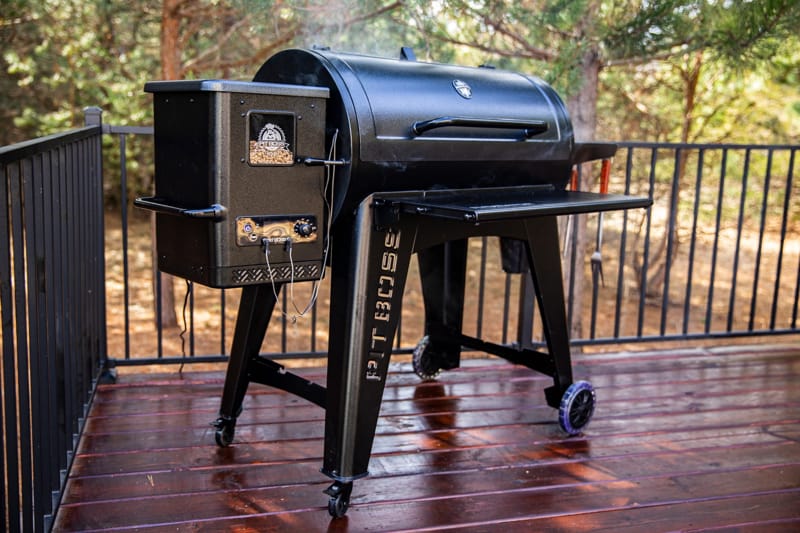
I’ve been using Pit Boss Pellet Grills for years now, and I have to say, they’re one of the best investments I’ve ever made; they are some of the best on the market. Let me tell you why.
First of all, the quality of construction is unmatched. These grills are built to last, with sturdy materials that withstand even the toughest outdoor conditions. They’re also incredibly versatile, with various features and options that make them perfect for grilling.
One of the things I love about Pit Boss Pellet Grills is how easy they are to use. With their digital control panels and automatic pellet feeders, you can set the temperature and forget about it. This means you can enjoy your food more and less fuss with the grill.
But what sets Pit Boss Pellet Grills apart is the food quality they produce. Because they use wood pellets for fuel, they impart a rich, smoky flavor to your food that’s hard to replicate with any other type of grill. And because the temperature is so consistent, you can always perfectly cook your food.
Of course, there are a few things to keep in mind when using a Pit Boss Pellet Grill. For example, you’ll need to monitor the pellet hopper and ensure it doesn’t run out of fuel mid-cook. And because they’re powered by electricity, you must ensure you have an extension cord long enough to reach your outdoor outlet.
But overall, I highly recommend Pit Boss Pellet Grills to anyone who loves to grill. Whether you’re a seasoned pro or just starting, these grills are easy to use, built to last, and produce some of the best-tasting food you’ll ever eat.
Traeger And Pit Boss: What’re The Main Similarities?
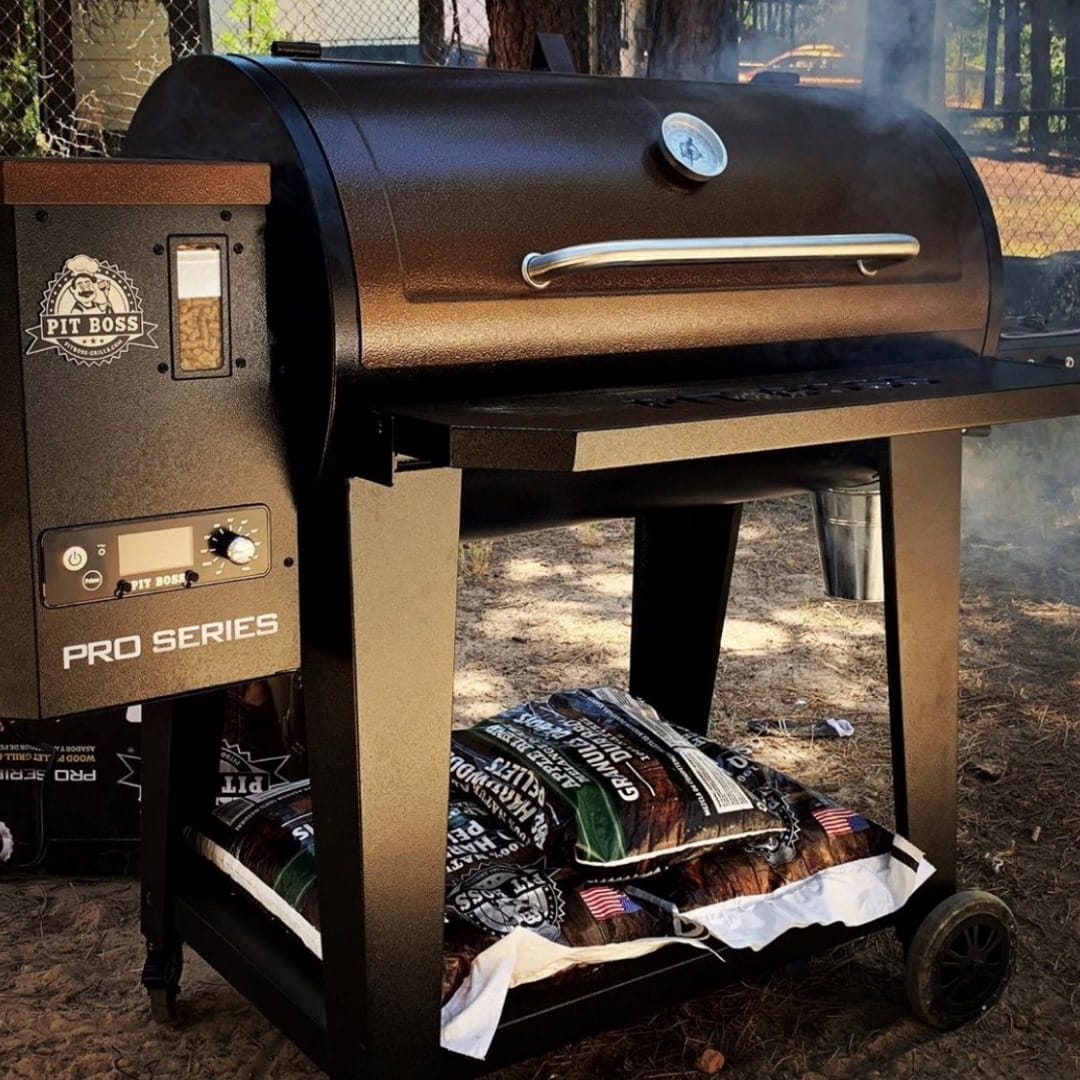
Traeger and Pit Boss are two of the most popular brands in the pellet grill industry. While they have their differences, they also share some notable similarities.
Both companies offer digital controllers for temperature and fuel management, making outdoor cooking incredibly easy. Each grill also has a hopper that can be filled with pellets for fuel. Traeger and Pit Boss grills also provide exceptional wood-fired flavor for every meal. These brands use porcelain-coated cooking grids that offer durability for years of use.
In summary, while Traeger and Pit Boss have distinct features, they share many similarities that make both brands fan favorites among BBQ enthusiasts.
What Are The Main Differences Between Traeger vs Pit Boss?
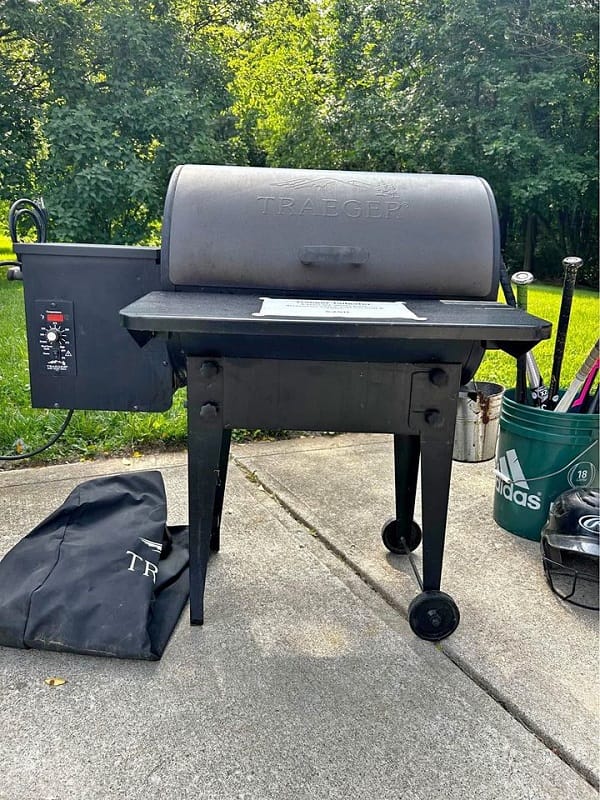
Traeger is the pioneer of pellet grills, having developed the concept and holding a monopoly on the market for 20 years after patenting the design in 1986. Traeger is the largest manufacturer of pellet grills, selling over $300 million worth of grills annually. On the other hand, Pit Boss was founded in 1999 and is a subsidiary of Dansons Inc. Their focus is on quality craftsmanship and making pellet grilling more affordable without sacrificing quality.
In terms of build quality, Pit Boss grills are made of 14-gauge steel, sometimes stainless, sometimes not, while Traeger grills use a mix of powder-coated steel and stainless steel. One notable difference between the two brands is the slide and sear system of Pit Boss grills, giving a small searing zone above the fire pot. Meanwhile, Traeger grills feature the WiFIRE system, which allows control of the grill via an app.
Both brands have offerings that cater to different needs, and it’s up to the consumer to choose which grill suits them best.
Brand History
Traeger and Pit Boss are two leading brands in the pellet grill industry, and their histories are distinct.
Traeger was founded by Joe Traeger in 1985 and was the first company to develop a wood-fired pellet grill. Its initial products were wood pellet-burning heating stoves, and the company soon realized that this concept could be incorporated into backyard smoking and grilling, leading to the development and launch of the first Traeger grill in 1988. Traeger held a monopoly on the market with the patent for this concept for nearly two decades. Today, Traeger offers various pellet grills incorporating the latest electronics and Wi-Fi for an automated, user-friendly experience.
On the other hand, Pit Boss was founded in 1999 by Dan Thiessen and his sons Jordan and Jeff, focusing on converting sawmill waste into a reliable energy source. Their subsidiary companies, Pit Boss and Louisiana Grills, eventually became one of Traeger’s biggest competitors, offering various price options. Pit Boss is known for its innovative designs and affordable pricing, which aim to make pellet grilling accessible for the average consumer without sacrificing quality.
Cooking Temperature Range
Traeger grills typically offer a temperature range of 165 to 450 degrees Fahrenheit, with some high-end models reaching up to 500 degrees Fahrenheit. On the other hand, Pit Boss pellet grills generally have a wider temperature range, ranging from 180 to 500 degrees Fahrenheit, with some models reaching even higher temperatures.
This wider temperature range can be useful for cooking various foods, including searing steaks and grilling pizzas. However, it’s important to note that Traeger grills are known for their precise temperature control and consistency, which can be important for achieving optimal cooking results.
How Does The Temperature Control System Accuracy Of Traeger Grills Compare To That Of Pit Boss Grills?
Traeger grills come equipped with a digital PID controller, which is highly accurate and maintains a consistent temperature throughout the cooking process. On the other hand, Pit Boss grills use a traditional controller, which can result in fluctuations in temperature. However, Pit Boss has recently introduced its version of a PID controller, which is increasingly available on their newer models.
Read more:
Hopper Capacity
Traeger grills tend to have smaller hoppers compared to Pit Boss grills. For example, the Traeger Tailgater has a hopper capacity of 8 pounds, while the Pit Boss Tailgater has a larger hopper capacity of 5 pounds, at 13 pounds.
The larger hopper capacity of Pit Boss grills allows longer cook times without refilling the hopper with more pellets. This could be an essential consideration for those who plan to cook larger meals or smoke longer.
Smoke Production
Traeger models are known for their consistent smoke production, as their auger system delivers a steady stream of pellets to the fire pot, resulting in a continuous supply of smoke.
The Traeger Pro Series, for example, utilizes this system to create rich, flavorful smoke that enhances the taste of any meat. On the other hand, Pit Boss grills have a more traditional smoker design, with a chimney that draws smoke up through the cooking chamber. While this may result in a smokier taste, controlling the smoke produced can be more difficult.
How Do Traeger And Pit Boss Perform In Terms Of Fuel Efficiency And Pellet Consumption During The Cooking Process?
Traeger grills use a unique auger system to automatically feed pellets into the burning area for controllable, consistent heat. This system allows for precise temperature control and efficient pellet consumption, resulting in a longer cooking time per pallet load. In contrast, Pit Boss grills have a larger hopper capacity, which can hold more pellets at once, but may require more pellets to sustain the same heat level as a Traeger grill.
Additionally, some Pit Boss models have a reputation for burning through pellets quickly, which can result in more frequent refills during longer cook times. It’s important to remember that fuel efficiency and pellet consumption may vary depending on the specific model and cooking conditions.
Odds and Ends
Traeger came first, with their pellet grills being the first on the market. The company is known for offering convenience, with no adjusting vents or worrying about coals. They have a straightforward model lineup: the bottom end is the Pro Series, the middle is the Ironwood, and the top is the Timberline.
On the other hand, Pit Boss offers a wider variety of products, including pellet/gas combos, grills, smokers, and a 3-in-one option. While their lineup can be confusing, the company strives to provide affordability while offering the same bells and whistles as other brands.
Regarding construction, Pit Boss uses a wider range of materials, including 14-gauge steel and various metals, while Traeger primarily uses powder-coated steel or stainless.
When it comes to size, both brands offer options ranging from small balcony grills to behemoth styles, but the Pit Boss models tend to have larger cooking areas.
Finally, in terms of odds and ends, Pit Boss offers open flame-searing capabilities, while Traeger has a warming mode for food and typically comes with fewer meat probes.
What Are The Key Differences Between Traeger And Pit Boss In Terms Of Cooking Surface Area?
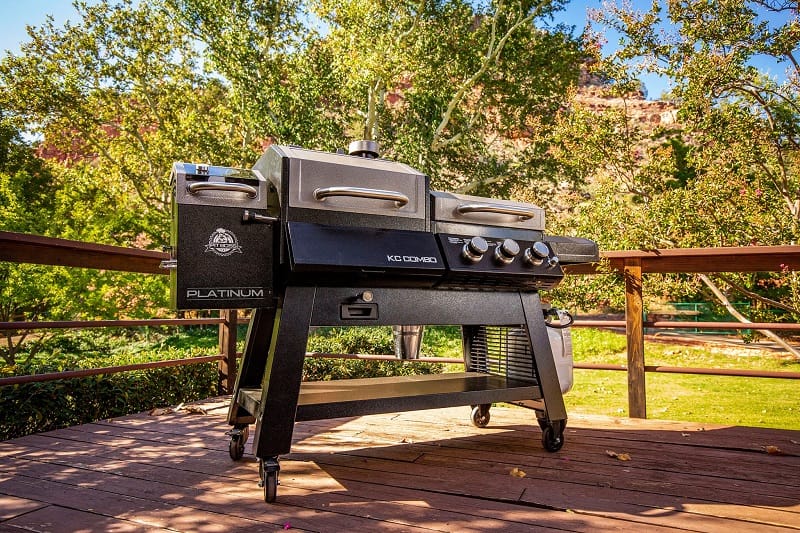
Traeger offers smaller grills, such as the Pro 575, with a cooking surface area of 575 square inches, while Pit Boss offers larger options, like the Sportsman 820, with a cooking surface area of 820 square inches. However, it is important to note that both brands offer various sizes and options to suit different needs.
When researching Pit Boss grills, it can be challenging to determine the exact cooking surface area and hopper capacity due to inconsistencies on their website. On the other hand, Traeger is more transparent with their specifications, providing clear information on their website.
Storage
Traeger typically includes shelves and cabinets for storage space, while Pit Boss grills may not have as many storage options. Some Pit Boss grills may have a bottom shelf, but some models have no storage space. Traeger also offers a larger variety of products that include storage components that are built in, such as the Traeger Pro Series 780, which has a large storage cabinet and shelves. In contrast, some Pit Boss models may have limited storage options and require additional storage accessories to purchase separately.
Construction Material
Pit Boss grills seem to be made of 14-gauge steel, sometimes stainless. On the other hand, Traeger grills use a mix of powder-coated steel and stainless steel. Both brands offer a variety of models with different features and options. In terms of quality, both brands have a reputation for producing well-built and durable grills. It is important to note that there may be variations in construction materials depending on the specific model of the grill.
Digital Controllers
Both brands use digital controllers for temperature and fuel management, but models have variations. Traeger uses a PID (Proportional Integral Derivative) controller, a more advanced system that provides stable temperatures and accuracy. On the other hand, Pit Boss uses a simpler digital control board that allows you to set the temperature in a range and maintain it within that range.
Traeger also offers new WiFIRE technology, which allows you to control the grill from your smartphone and monitor cooking progress remotely. On the other hand, Pit Boss features a straightforward digital interface with a few added features, such as a meat probe.
Ultimately, the digital controller options from Traeger and Pit Boss vary in sophistication and customization options, with Traeger having more advanced and modern features.
Wifi Compatibility
Traeger offers a more advanced Wi-Fi control system with their Pro series, allowing users to control the grill via an app. On the other hand, while Pit Boss offers some Wi-Fi-enabled options, their models generally prioritize other features over Wi-Fi compatibility.
This means that for those who value Wi-Fi control as a key feature, Traeger may be the better choice. However, Pit Boss can still be an excellent option for those who prioritize other aspects of the grill, such as cooking space or construction quality.
Traeger vs Pit Boss: Warranty
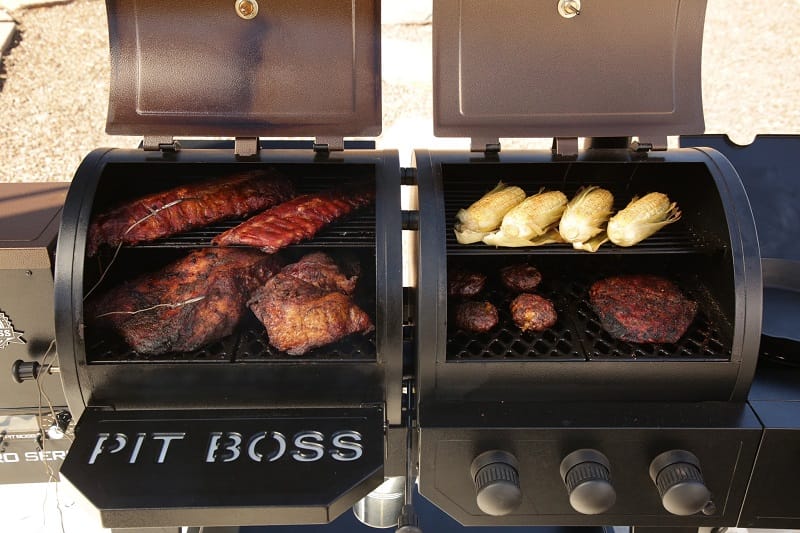
When it comes to warranty, Traeger offers a 3-year warranty term on all their products, except for their latest generation Timberline models, which get a 10-year limited warranty. However, Traeger’s warranty does not cover commercial use, which only gets a 1-year warranty term. It is important to note that a Traeger pellet grill must be operated following the instructions, and only Traeger-branded pellets should be used to avoid any damage.
On the other hand, Pit Boss is reputed for their affordable yet high-quality pellet grills, with most of its pellet smokers sitting at about the $500-USD 700 mark. The warranty terms for Pit Boss pellet smokers are not explicitly stated on their website, but customers can contact their customer service for further details.
In summary, Traeger offers a longer warranty term while Pit Boss is more affordable, but Traeger’s warranty coverage might not be suitable for commercial use.
How Do The Price Range Of Traeger And Pit Boss Grills Compare
Generally, Traeger grill models are more expensive compared to Pit Boss models. Traeger grills’ starting price ranges from around $400 to $2,000, while Pit Boss models often start around $200 and can go up to $1,200. Traeger grills usually offer more premium features, such as Wi-Fi connectivity, advanced temperature control systems, and larger cooking areas. However, Pit Boss models can still provide similar cooking capabilities at a more affordable price.
It is important to note that the price range can vary depending on the model and the specific features offered.
Customer Support
Traeger offers a robust customer support system, including FAQs, live chat, email and phone support, and a comprehensive database of articles and videos on their website. They also have a mobile app that offers troubleshooting guides and step-by-step instructions.
On the other hand, Pit Boss offers limited customer support, with only email and phone support available. They don’t have a comprehensive database of articles and videos on their website or a mobile app.
Overall, Traeger has a better reputation for customer support than Pit Boss. However, it’s worth noting that both brands have many loyal fans willing to offer advice and support on online forums and social media.
What Are The Pros And Cons Of Investing In A Traeger Grill?
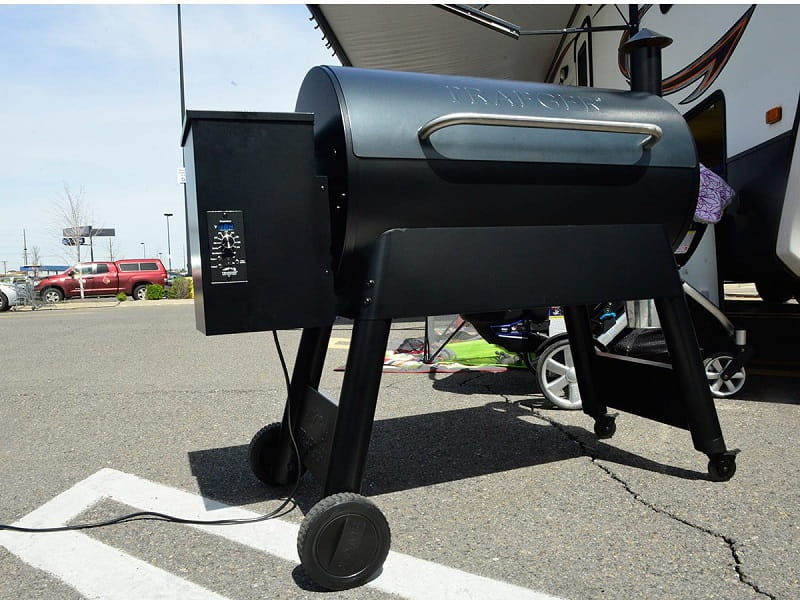
When considering investing in a Traeger Grill, weighing its pros and cons is important. Traeger Grills are known for their high quality and advanced features, which set them apart from other grilling brands. This guide will outline the pros and cons of investing in a Traeger Grill to help you make an informed decision.
Pros:
- High-Quality: Traeger Grills are made from high-quality materials with advanced features, making them a worthwhile investment for serious grillers.
- Leading-Edge Technology: Traeger sets the standard for creating technology that leads the grilling industry. They were the first to offer wifi-enabled pellet grills that allow you to control the pellet grill remotely, providing precise temperature control.
- Ease of Use: Traeger Grills are easy to use. Their electric temperature control device allows you to pinpoint the exact temperature you want to cook your food at, making it easy to achieve consistent results.
- Superior Speed Control: Traeger’s DC motor powers the augur that feeds fuel pellets into the grill, offering superior speed control and keeping the temperature of your grill consistent.
- More Cooking Surface: Traeger models like the Traeger Pro, Traeger Ironwood Series, and Traeger Timberline have more square inches of cooking surface than much of the competition. They are designed to reduce flare-ups while you barbecue.
Cons:
- Expensive: Traeger grills are priced at a premium compared to the competition. The high-quality materials and advanced features contribute to their higher price point.
- Requires Power Source: As Traeger grills are electric, they require a power source to operate. It cannot be taken to places without a power outlet, making it less portable than traditional grills.
- Longer Cooking Time: Traeger grills take a little longer to cook food than traditional grills, operating at a lower temperature. This may be a disadvantage for those who want to grill quickly.
- Requires Pellets: Traeger grills require wood pellets to cook, which must be purchased separately. This can add to the overall cost of using the grill.
- Difficult to Clean: Traeger grills require regular cleaning and maintenance, which may be difficult for some users.
In conclusion, Traeger Grills is a high-quality investment with advanced features that set them apart from competing brands. They provide precise temperature control and are easy to use, but they come with a higher price tag and require a power source for operation. Their longer cooking time and requirement for pellets may also be factors to consider when deciding whether to invest in this type of grill. Ultimately, it is up to the individual to weigh the pros and cons and decide if Traeger Grill is the right investment for them.
What Are The Pros And Cons Of Investing In A Pit Boss Grill?
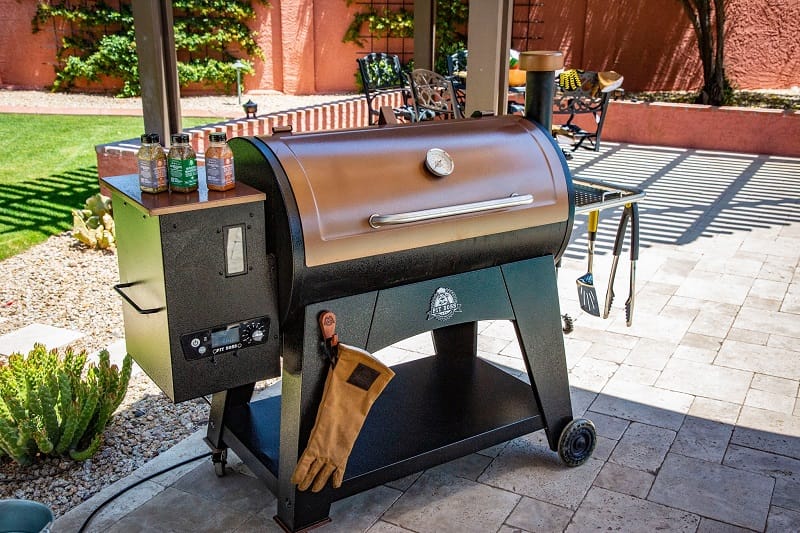
Here, I will provide a detailed analysis of the pros and cons of investing in a Pit Boss grill.
Pros:
- Wide range of options: Pit Boss offers a wide range of grills, smokers, and barbecues. You can select from the wood palette, gas, charcoal, and combos.
- Affordable: Compared with other brands, Pit Boss grills have an excellent price point, making them an affordable choice for a premium grilling experience.
- Efficient cooking: Pit Boss grills cook slowly and efficiently, saving up on fuel while delivering perfectly cooked food.
- Monthly installment payments: Pit Boss offers the convenience of making installment payments monthly, making it easier for people to invest in their products.
- Aroma: Using a wood palette adds an awesome aroma to your turkey and enhances the taste of your food.
Cons:
- App crashes: Pit Boss has a phone app; however, there are reports that it sometimes disrupts the user experience.
- Return policy: In the case of a return, customers have to pay for it, which can be an inconvenience.
- Limited temperature range: Pit Boss grills have a limited temperature range compared to some high-end pellet grills, making them less precise and consistent in cooking.
- Quality control issues: Some users have reported issues with quality control, such as missing parts or defects. However, Pit Boss has a responsive customer service team that can help address these issues.
Pit Boss grills are an excellent investment for those looking for an affordable and reliable pellet grill that can handle various cooking tasks. While there may be some drawbacks, such as limited temperature range and pellet consumption, they are outweighed by the many benefits that come with using a Pit Boss grill. The wide range of options, efficient cooking, and aroma added by wood palettes make Pit Boss grills a worthwhile investment.
How To Maintenance And Cleaning Traeger Or Pit Boss Grill?
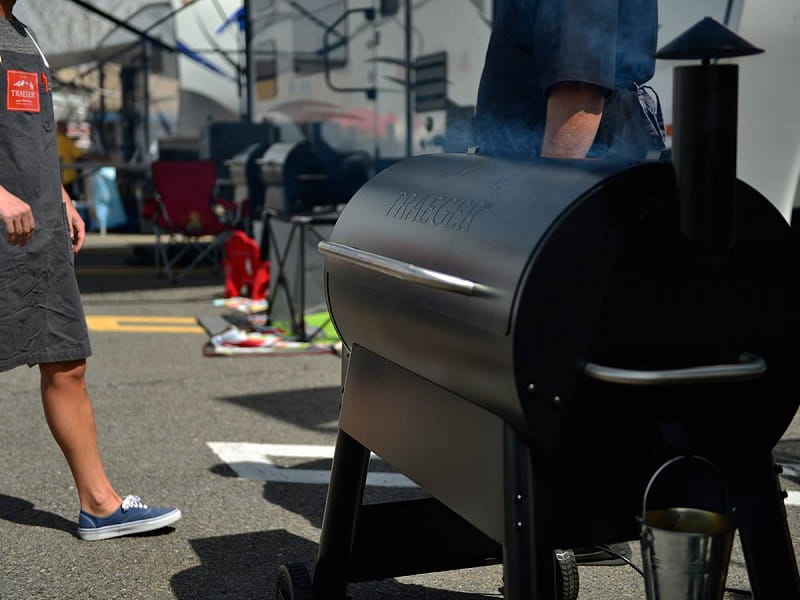
Maintaining and cleaning your Traeger or Pit Boss grill is essential to ensure its longevity and achieve optimum performance. Follow these easy steps for proper maintenance and cleaning:
- Depending on your preference, Deep cleaning should be done after 4-5 cook intervals or before every summer.
- Gather the necessary tools, such as cleaning products, gloves, scrubbing materials, vacuum, and vinegar.
- Clean the interior and exterior parts of the grill. Do not use abrasive or harsh chemicals, as these can ruin the grill grate’s porcelain enamel.
- Remove leftover pellets from the hopper by emptying it after each cook. Let the grease cool down and solidify before emptying the grease bucket and washing it with soap and water.
- Use a non-metal brush to Wash the grill grates and deflector plates with hot soapy water. Scrape away any debris on the flame broiler and brush, as it’s not waterproof.
- Wipe the smoke shelf with vinegar and water to remove smoke residue buildup.
- If you have a vertical Pit Boss, clean the glass to remove smoke residue buildup and ensure clear visibility.
- Vacuum the hopper and burn pot to remove particles and ashes on any part of the grill. Put the hose inside the fire burn pot and hopper to suck out the dirt.
- Use the burn-off method to remove food particles, chunks, and grease buildup. Set the temperature to the maximum and leave it on for 20 minutes before using a vacuum to suck out charred debris.
- Disconnect the grill from the socket, take out any components you are washing, and prevent water from getting underneath the heat deflector, which contains the electrical parts of the grill.
By following these easy steps, you can maintain and clean your Traeger or Pit Boss grill in no time. Doing this regularly will prolong its lifespan and ensure your food is always perfectly cooked.
Conclusion
Ultimately, Traeger and Pit Boss offer high-quality grills that allow you to cook delicious meals for your family and friends. It all comes down to personal preference and what you need in a grill. So, take some time to think about your needs and choose the grill that is right for you.
We hope this post has been helpful in answering the question of Traeger vs Pit Boss. Let us know how it turns out by leaving a comment below.
References:

Hey readers! Chip Holland here, and I’m a Manager of this website. My passion for writing about it only matches my passion for BBQ. Follow my blog for mouth-watering recipes, tips, and tricks for the perfect smoke, grill, and BBQ. I’m sure you won’t be disappointed!
